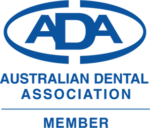How to fix pacifier teeth? Infants and young children often use pacifiers, but they may cause tooth problems that need treatment. We’ll discuss ways to treat pacifier teeth and straighten teeth in this tutorial. To assist your kid have a healthy smile, we will help you understand pacifier teeth causes, prevention, and treatment. Let’s learn how to treat and prevent pacifier teeth.
What Are Pacifier Teeth?
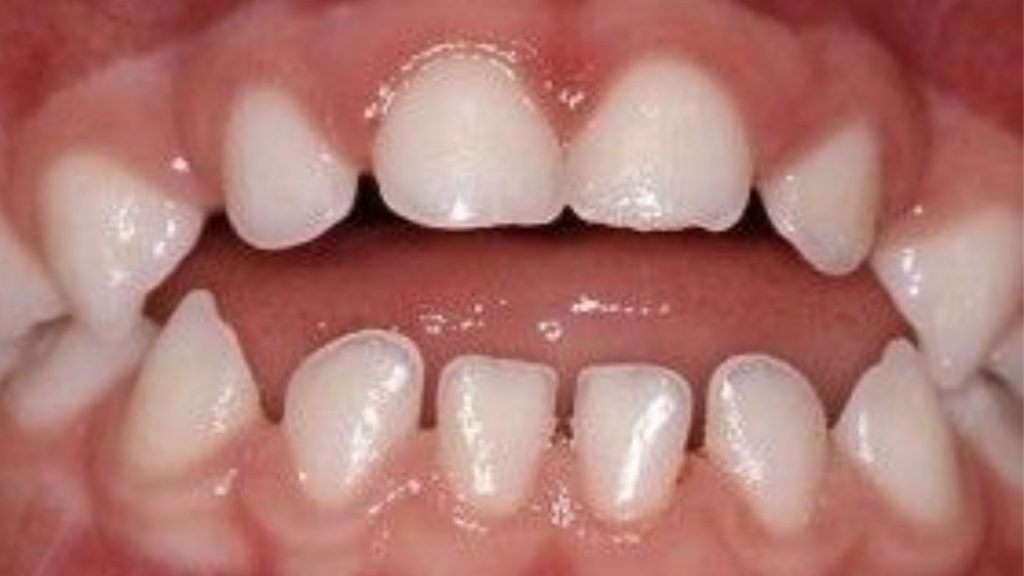

As a colloquial expression, “pacifier teeth” refers to the damage done to children’s teeth by using pacifiers for an extended period of time. During infancy, babies typically suck on the nipple for longer than advised. The teeth of a child might be negatively impacted by prolonged use of a pacifier, a condition known as pacifier teeth.
Causes of Pacifier Teeth
Here, we’ll discuss the factors that lead to “Pacifier Teeth,” or impacted teeth in youngsters who rely on pacifiers for an extended period of time. The pacifier is a ubiquitous and comfortable item for babies and young children. However, prolonged or improper pacifier use might have serious consequences for your baby’s tooth growth:
- Prolonged sucking habits: Too much nipple sucking puts abnormal strain on the teeth and jaw, causing harm.
- Timing of nipple use: Long-term pacifier usage, particularly after teething, might alter tooth growth and location.
- Nipple suction intensity: Its power and frequency influence tooth health. Strong or prolonged suction may damage the teeth and jaw, causing tooth length discrepancies and bite misalignment.
- When to start and stop sucking the nipple: If a baby starts using a pacifier too early or keeps using it too long after their first teeth come in, it can affect how their teeth grow.
- Genetic factors: Some babies’ teeth and jaws are prone to damage from pacifiers because of their genes.
- Other factors: Genetic misalignment, asymmetric biting force, and thumb sucking may also affect tooth development.
In conclusion, understanding what causes pacifier teeth may help you detect your child’s sucking behaviors’ detrimental impacts and develop effective treatment and preventative methods.
How Pacifier Teeth Affect A Baby?
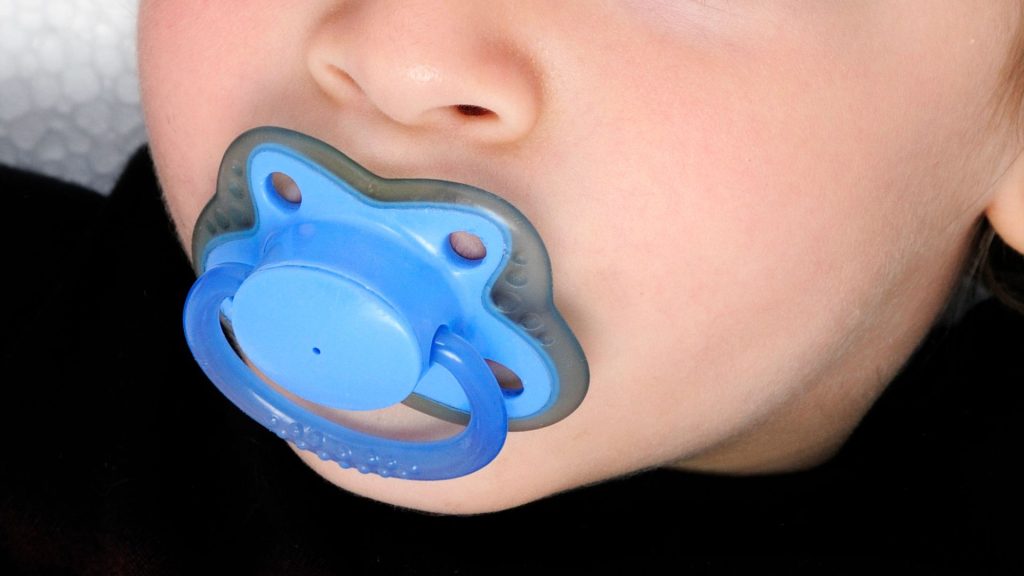

“Pacifier teeth,” the phrase for the dental abnormalities that may develop from using a pacifier for too long, are a real concern. Common problems with permanent teeth include:
- Tooth length disagreement: Too much time at the teat might cause uneven tooth development in infants. This may cause certain teeth to be much longer or shorter than others, making the jaw seem misaligned and skewed.
- Irregular teeth: Tooth misalignment might develop from using a pacifier. Having teeth that shift, slant, or stack may make a grin seem crooked.
- Misalignment: A person’s ability to bite and chew may be affected if their teeth are misaligned or don’t fit together properly. Tooth issues like a back bite, an open bite, or a crossbite might result from this.
- Speech and pronunciation problems: There may be difficulties in speech development if the use of a pacifier alters the position of the teeth and mouth.
- Issues with chewing and eating: Eating and swallowing might be difficult with uneven teeth. The youngster may have trouble eating and digesting.
- Confidence and appearance issues: Problems with a child’s teeth or jaws can make them feel bad about themselves and make them look different from their peers.
To sum up, for healthy oral development, it’s crucial to recognize the consequences of pacifier use and implement effective solutions. Taking your kid to the dentist might help you figure out the best course of action for caring for his or her teeth.
Prevention Measures For Pacifier Teeth
Babies are like tiny flowers just opening their petals, and good dental health is crucial to their entire appearance and well-being. However, when parents are confronted with the “Pacifier Teeth” issue, their fear and concern go beyond words. We’d like to share some practical “Pacifier Teeth” preventive solutions to provide you peace of mind and safeguard your baby’s grin.
- Determine the right time to stop using a pacifier: The best time to stop using a pacifier is usually between 6 months and 1 year when a baby’s teeth and mouth are still developing.
- Reduce suction intensity: If your baby has a habit of sucking hard on the nipple, you can eventually weaken the suction. A good way to lower sucking pressure is to cut the top of the nipple or use nipples with holes in them.
- Monitor pacifier use time: Children shouldn’t use pacifiers all day long. This helps to lessen the bad effects on how the teeth and jaw grow.
- Facilitation and support: Make it easier for your child to stop using a pacifier by giving them other things to do that are fun and interesting. You can help your baby forget that he or she needs a pacifier by telling stories, playing games, or giving them new foods.
- Visit and consult a dentist: The most important thing is to see a doctor and get advice. The dentist will be able to give you a good idea of how your child’s teeth are doing and tell you what to do and what to watch out for.
In conclusion, discuss and lead your doctor to ensure your child’s preventative techniques are correct for them.
How To Fix Pacifier Teeth?
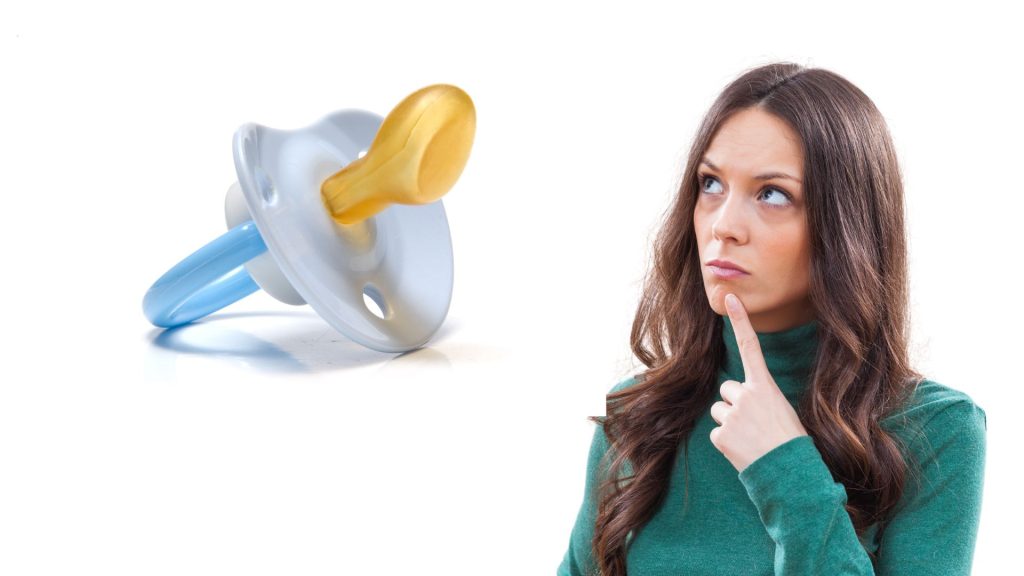

Most solutions for “pacifier teeth” (teeth damaged by using a pacifier for a long time) focus on fixing and repairing tooth and jaw growth. Here are a few popular ways to treat:
Orthodontic Treatment


If your child has “Pacifier Teeth” (a tooth that has been negatively impacted by chronic pacifier usage), orthodontic treatment is an excellent option. Aligning a child’s teeth is about more than just aesthetics; it’s also about establishing a healthy bite and jaw. Common techniques for straightening teeth include:
- Guide Hook: A guide hook is a small device that is put on a child’s teeth and mouth. It applies a light, steady force to move and straighten the teeth. The guide hook is generally changed every so often to keep up with the growth of the teeth.
- Palatal Crib: The top mouth has a little lattice-like mouthpiece. It prevents breast biting and finger sucking by pinching the infant when they touch it.
- Braces: It is a popular way to fix teeth, and they work well. Braces help fix the position of a child’s teeth and jaws by using shots or small hooks to move the teeth or jaws into a better position.
Note that, straightening teeth normally takes some time and needs frequent follow-up visits from the dentist. Based on the unique instance, the doctor will analyze the child’s oral condition and devise a suitable tooth correction strategy.
Please contact a dentist for correct counseling and follow-up in the process of teeth alignment to address your child’s Pacifier Teeth issue.
Monitoring Teeth Pacifier Therapy
“Pacifier Teeth” are teeth affected by long-term pacifier use. Watching them may help. You can prevent or treat future issues with your child’s teeth and jaw by monitoring their development. Check your “Pacifier Teeth” treatment:
- Dental Check-up: Check your child’s teeth at the dentist on a regular basis. Your dentist will evaluate your tooth development, bite, and tooth modification requirements.
- X-rays: To analyze the “Pacifier Teeth” influence on tooth development, the dentist may propose an X-ray for the kid. The dentist uses dental X-rays to locate your teeth and identify any issues.
- Observe and record: You may record your own thoughts and observations as you see your child’s teeth develop. Take note of any adjustments to your bite, tooth position, or anything else that could be different. If you notice anything wrong, inform the doctor immediately.
- Ask and discuss with the doctor: Consult with your child’s dentist and ask questions about his or her dental health. They know how to diagnose issues, keep tabs on progress, and provide preventative care.
Changing Habits
Changing behaviors is a key aspect of treating “Pacifier Teeth” (teeth impacted by chronic pacifier usage). Here are some lifestyle adjustments you may do to assist with this condition:
- Nipple Removal: First and foremost, reduce or discontinue nipple usage. In lieu of the pacifier, try alternative forms of solace, such as play or the company of loved ones, or objects like a blanket, pillow, or stuffed animal.
- Change the habit of sucking: Help and encourage your youngster to stop sucking his fingers if he has a tendency of doing so. Tools like gloves, tape, or an anti-bite poultice might help kids resist the urge to bite.
- Support and comfort: Provide reassurance and comfort if your infant is resisting letting go of the breast. Help your kid make the switch from pacifier usage by talking about the positives of doing so, offering words of encouragement, and creating a nurturing home atmosphere.
- Create a healthy oral environment: A nutritious diet, with less sugary and sticky foods, can help your kid maintain a healthy dental environment. Your child’s oral health may be improved with a daily regimen of brushing, flossing, and rinsing with water.
It’s important to keep in mind that forming new routines takes time and effort. During your child’s therapy, it is crucial that you give him or her a loving and caring atmosphere.
Conclusion
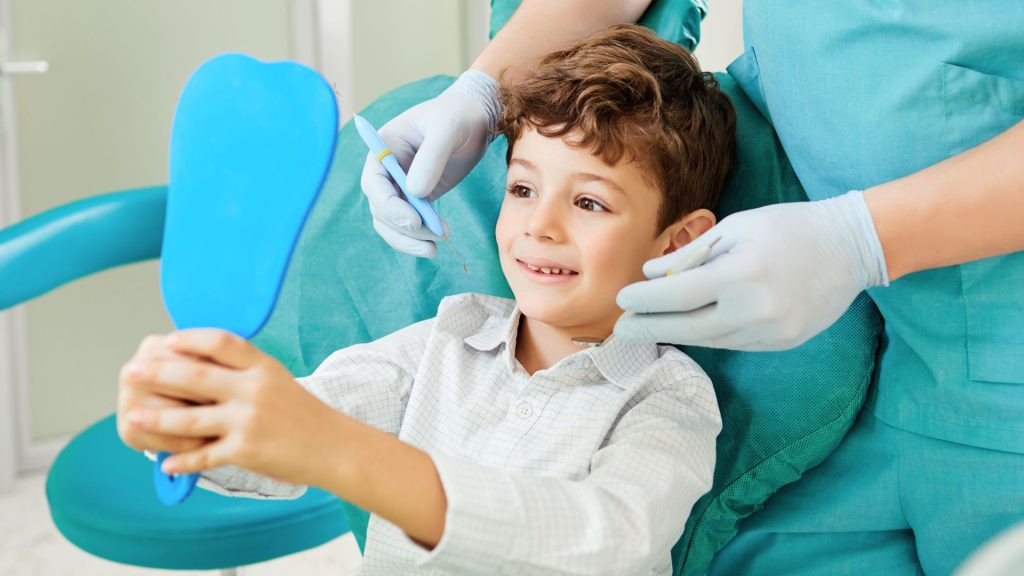

The appearance of “Pacifier Teeth” in a youngster is a red flag that the child’s teeth need quick treatment. It is essential to send your kid to the Spring Orchid Dentistry Clinic for regular dental check-ups and to enroll your child in the Children’s Dentistry Benefits Program (CDBS).
Spring Orchid Dental Clinic is a compassionate and professional firm that focuses on the requirements of its young customers in addition to offering outstanding dental care. The clinic employs highly experienced dentists who are committed to providing your child with the best treatment possible, including the correction of “Pacifier Teeth” and the maintenance of proper oral hygiene.
Make an appointment right now!
FAQs
Are Pacifier Teeth Permanent?
Many oral problems, depending on their severity and treatment, may be permanent.
In some cases, taking a pacifier will only have short-term effects that can be fixed. For instance, if the child stops using the pacifier at a young age and the tooth problems aren’t too bad, the teeth may just move back into place over time. But if a baby uses a pacifier for a long time and it causes major misalignment or distortion of the teeth and mouth, the effects may be long-lasting and require dental care.
Remember that pacifier teeth vary in intensity and duration for each kid. So, consult a pediatric dentist or orthodontist for pacifier-related dental concerns.
How Old Is Too Old For Pacifiers?
Depending on the child and what they need, the right time to take away a pacifier can be different for each child. Most pediatricians say that kids should stop using pacifiers between the ages of 6 months and 2 years. People often suggest this time range because it fits with the development of other mouth motor skills and the change to solid foods.
However, every kid is different, so it’s crucial to evaluate their requirements and consult with a doctor or dentist to determine the right age to stop using pacifiers. They can give you information that is tailored to your child’s situation and help make it easier for your child to stop using a pacifier.
What Can You Replace A Pacifier With?
There are a variety of alternatives to pacifiers that may help your kid shift away from reliance on them. Here are some potential paths to take:
- Transitional Objects: A nice blanket, plush animal, or soft toy might replace the pacifier and bring comfort. Help your youngster bond with the transitional item for comfort.
- Thumb or Finger Sucking: Some youngsters spontaneously switch from pacifiers to thumb or finger sucking. However, continuous thumb or finger sucking might cause dental issues, so it’s crucial to watch. Concerns? See a pediatric dentist or orthodontist.
- Sippy Cup or Straw Cup: If your kid can drink from a cup, you may replace the pacifier with one. While transitioning to age-appropriate drinking ways, this provides mouth stimulation.
- Establishing New Routines: Develop pacifier-free behaviors. Provide a relaxing sleep ritual with reading, music, and massages.
- Reward and distract your youngster for not using the pacifier. Encourage them with praise, candy, or other prizes. Playing, reading, or exciting them may help babies forget the pacifier.
But, keep in mind that every kid is unique and that it may take some experimenting to discover a suitable replacement for pacifiers. Help your kid feel safe and secure by being patient and understanding while they adapt to the new situation.




